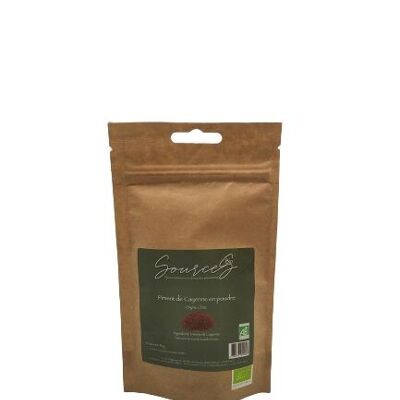


Ground cayenne pepper is a spice known for its intense heat and slight fruity touch. Its taste is associated with a burning sensation in the mouth, accompanied by a smoky note. This spiciness is mainly due to capsaicin, a chemical compound found in cayenne pepper. It is widely used in Asian cuisine and is present in various sauces, including Tabasco. Ground cayenne pepper comes from the cayenne pepper plant, native to Central America. Red peppers are harvested, dried, then ground to obtain this spice. Imported to Europe by Christopher Columbus in the 15th century, it is now present in kitchens around the world, particularly in China, India, Europe and South America. It is important to store it in an airtight container to preserve its flavor and aroma. Despite the existence of several varieties of cayenne pepper, once ground they have similar characteristics in terms of color, aroma and spiciness. Cayenne pepper is rated at level 8 on the Scoville scale, which measures the hotness of chili peppers, placing it in the "scorching" category."It is important to note that cayenne pepper is often confused with cayenne pepper, although they differ in their preparation. This chili also has health benefits. It is rich in vitamins, trace elements and flavonoids, providing anti-aging properties and helping to prevent certain types of cancer. Capsaicin helps burn fat, reduce appetite and relieve bloating, thereby promoting weight loss. In addition, it reduces cardiovascular risks and improves blood pressure. The presence of beta-carotene and vitamin C in cayenne pepper helps fight colds, flu and congestion, while boosting the immune system. Cayenne pepper is used to enhance the flavor of many dishes, both for basic recipes and for specialty dishes. It is widely used in Asian cuisine to add spice to wok vegetable stir-fries, but also in the composition of sauces and marinades for meat and fish. It can also be combined with meat, nuts and even chocolate to create unique sweet and spicy flavors. It is essential to add it with caution at the end of cooking to benefit from its aroma without accentuating its spiciness. Some recipes suggest flavoring tea or oil with cayenne pepper to cook with this spice.











